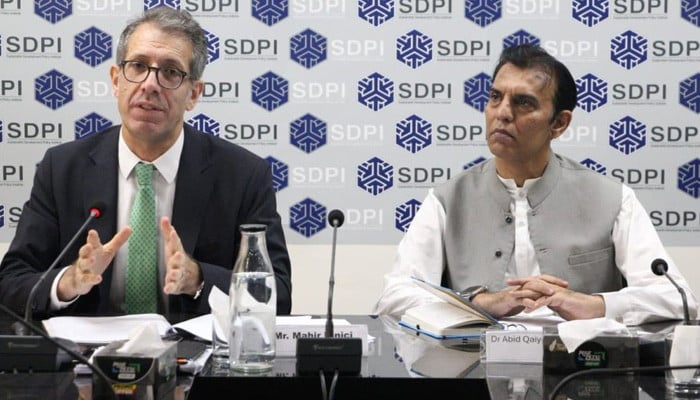Summary
International Monetary Fund Resident Representative for Pakistan Mahir Binici praised the country’s strong performance under the Extended Fund Facility and emphasised that structural
Source: The News International

AI News Q&A (Free Content)
Q1: What are the structural reforms suggested by the IMF for Pakistan's economic sustainability?
A1: The International Monetary Fund (IMF) suggests structural reforms for Pakistan that focus on fiscal consolidation, privatization of state-owned enterprises, and enhancement of tax revenue. These reforms aim to address fiscal imbalances, improve economic competitiveness, and stabilize the balance of payments. The IMF emphasizes the importance of these reforms in achieving long-term economic sustainability and resilience.
Q2: How has Pakistan's economic structure evolved over recent decades?
A2: Pakistan's economy has undergone significant transformations, moving from a reliance on agriculture to a semi-industrialized structure. Key developments include the privatization of state-owned enterprises, liberalization of trade, and infrastructure projects like the China-Pakistan Economic Corridor (CPEC). Despite these changes, challenges such as political instability, high population growth, and external debt persist.
Q3: What role does the China-Pakistan Economic Corridor (CPEC) play in Pakistan's economic development?
A3: The China-Pakistan Economic Corridor (CPEC) is a major infrastructure project that aims to enhance connectivity and stimulate economic growth in Pakistan. It includes investments in energy, transportation, and industrial development. CPEC is expected to create jobs, reduce energy shortages, and improve regional connectivity, contributing to Pakistan's economic stability and growth.
Q4: What are the criticisms of structural adjustment programs (SAPs) by the IMF?
A4: Structural adjustment programs (SAPs) by the IMF have been criticized for imposing strict economic policies that can lead to social sector cuts and increased poverty. Critics argue that these programs prioritize fiscal discipline over social welfare, often compelling borrowing countries to comply with policies that may not align with their domestic needs, thus affecting social equity and development negatively.
Q5: How does the IMF evaluate Pakistan's economic performance under the Extended Fund Facility?
A5: The IMF evaluates Pakistan's economic performance under the Extended Fund Facility by assessing fiscal consolidation efforts, structural reforms, and macroeconomic stability. Pakistan's adherence to program conditions, such as reducing fiscal deficits and improving tax collection, is crucial for receiving positive evaluations and continued financial support.
Q6: What are the potential benefits of implementing an industrial policy approach to AI in Pakistan?
A6: Implementing an industrial policy approach to AI in Pakistan can foster economic resilience and autonomy. By focusing on local AI product development and reducing reliance on foreign technologies, Pakistan can enhance its economic independence and national security. Educational reforms and public-private partnerships in AI can also create jobs and stimulate economic growth.
Q7: What are the main challenges facing Pakistan's economic sustainability?
A7: Pakistan faces several challenges in achieving economic sustainability, including political instability, rapid population growth, and significant external debt. Additionally, reliance on agriculture, particularly the textile industry, and the need for energy and infrastructure development are critical areas that require strategic policy interventions to ensure long-term economic stability.
References:
- Economy of Pakistan
- Structural adjustment
- The Case for an Industrial Policy Approach to AI Sector of Pakistan for Growth and Autonomy



